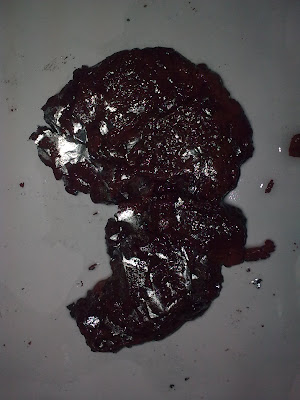ChemMatters - Episode 2: Plastics Go Green from ACS Pressroom on Vimeo.
Did you know that about 90,718,474,000kg, or 200,000,000,000lbs of plastic is manufactured every year? And that 20 present of that could be Bio-degradable, and Eco-friendly Bioplastic? what is Bioplastic you ask? Well, in this video from Vimeo.com,it tells us everything you need to know about this newly discovered plastic. Green Plastic, or Bioplastic, is a plastic made of of Corn, Sugar Cane, and Sugar Beets, and is supposedly the best way to go. Or is it? In this video the narrator talks about the good, and bad characteristics of Bioplastic. He also talks about were plastic comes form, how its manufactured, and what it is manufactured out of.
Like I said before, Bioplastic is made up of the sugar form Corn, Sugar Cane, Sugar Beets, and many others. This plastic, because it is made up of biological material, is more environmentally friendly, than traditional plastic. But is it all good?
Organisations like "Nature Works LLC", who manufacture Bioplastic, say it is the best way to go. That it is extremely environmentally friendly. It does not require any fossil fuels, natural gas, or coal, it can be used to make compost, it uses organic substances such as corn, and it does not cause water, or air pollution. What could be better right? Wrong. Yes, the product itself does not pollute, but look around it. To grow corn and other crops used to make Bioplastic you need pesticides, urbacides, and fertilizers, contributing to water pollution. Also, motor vehicles used for planting, cultivating, harvesting, and shipping crops use crude oil and release carbon dioxide and are mayor affects in air pollution. Also, Bioplastic factories may not use oil to make the plastic, but they use electricity that is made usually by using fossil fuels. Also, the risk of using too much farmland for plastic instead of food, could result in a food crisis, or famine. Some organisations might cut down forests and jungles to make more farmland, but thats not a solution either. Another thing is that when degrading in a compost pile it gives of CO2 and methane gas that is harmful to the environment. Sometimes even, instead of being used as compost, it is thrown away like the rest of the trash, and then dangerous gases get released into the air causing more air pollution. So Bioplastic is not as great and perfect, as it sounds.
Like I mentioned earlier, the production of Bioplastic creates a lot of chemical reactions. here are a few; Molecules (a group of two or more elements or atoms binded together), Monomers (a pair of molecules), Polymers (long chains or collections of monomers, Polymerization (linking different monomers to create irregular polymers), Condensation Reaction (when polymerization gives off a small molecule, every time a bond is formed), Addition Reaction (when polymerization is occurring, and molecules have double bonds or triple bonds), when Bioplastic is degrading it can give off CO2 or methane gas. In the video we saw a number of elements, but only a few were different. These were; Oxygen, hydrogen, Carbon, and element “R”. This just proves that multiple molecules, are made up of similar elements and make totally different results.
 that they are replicating signals and are transmitting them through animal bodies. They send signals through tiny bubbles or capsules that are one beside another, and the signal is sent from one bubble to the next. This is transporting the signal through the body and telling it what to do.
that they are replicating signals and are transmitting them through animal bodies. They send signals through tiny bubbles or capsules that are one beside another, and the signal is sent from one bubble to the next. This is transporting the signal through the body and telling it what to do.












